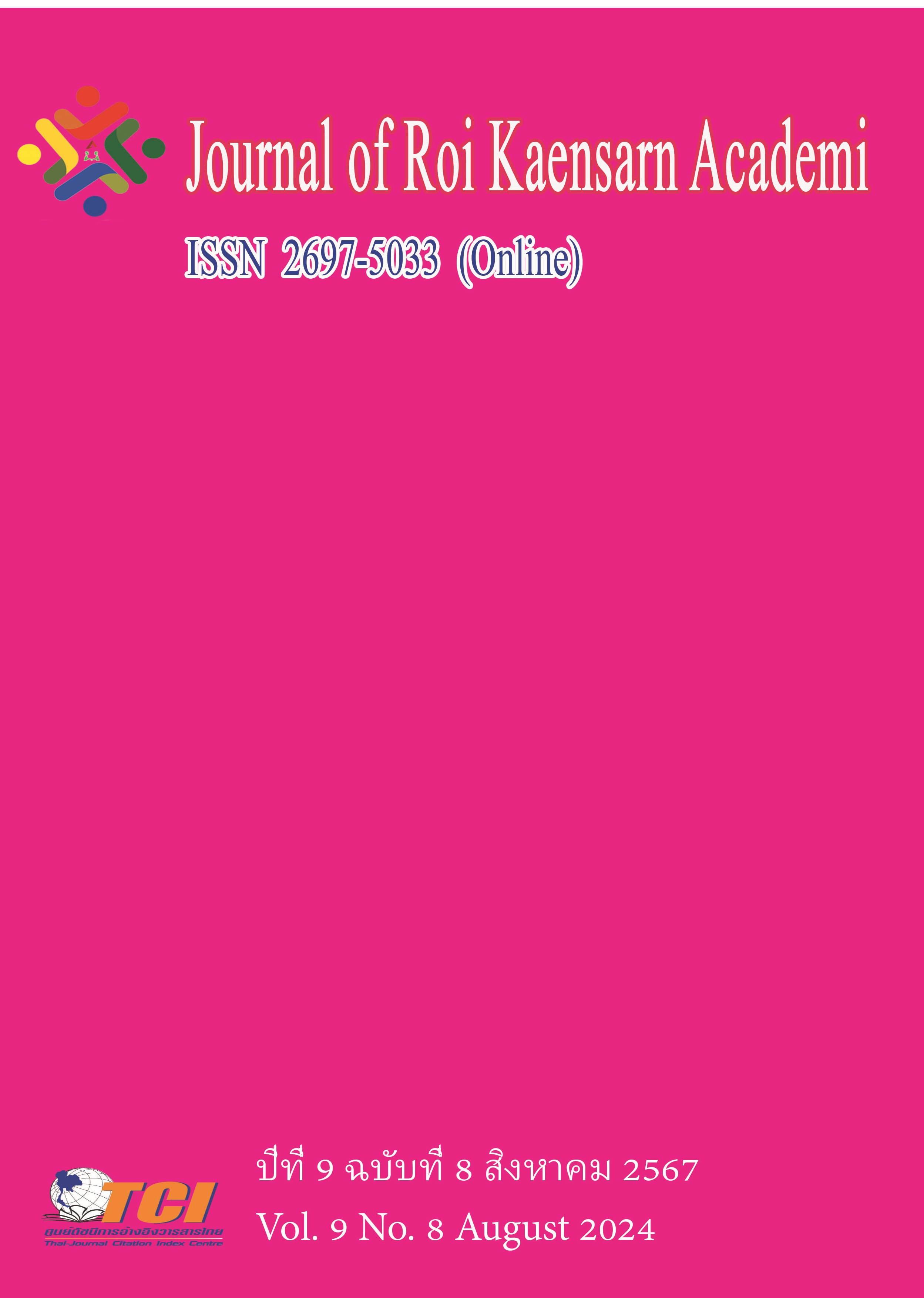The Experience-Based Digital Design for Shawan Piaose for Preserving Guangdong's Folk Rituals
Main Article Content
บทคัดย่อ
Background: The integration of folklore with digital technology has emerged as a critical topic in cultural heritage digitization discussions. Digital technology presents opportunities to broaden the avenues for presenting folklore, enrich traditional folklore's spatial and scenic expressions, and transcend temporal and spatial limitations in cultural transmission and evolution.
Aims: This study focuses on Shawan Piaose, an intangible cultural heritage of Guangdong, to analyze its cultural dimensions, historical context, and interpret its embedded cultural symbols and traditional experiential elements. The aim is to explore how digital design can enhance the presentation and cultural significance of this folk ritual.
Methodology: Through a combination of literature review and field research, the study examines the developmental trajectory and cultural aspects of Shawan Piaose. Drawing on theories such as folk semiotics, communication, and interactive ritual chains, the digital design framework is constructed. Donald Arthur Norman's user experience hierarchy model guides the structuring of the digital experience.
Results: The analysis involves three levels of digital design intervention: Visceral level: Analyzing and redesigning the ritual symbols and connotations of the Piaose procession. Behavioral level: Exploring narrative communication elements and adopting AR interactive narrative modes to enhance interactive storytelling. Reflective level: Investigating the cultural implications of Shawan Piaose entertainment and the emotional resonance of festival rituals. It explores methods to transform traditional ritual media into modern formats, facilitating participant engagement and transcending physical boundaries.
Conclusion: The digital reinterpretation of Shawan Piaose enables participants to engage deeply in virtual spaces, fostering a sense of belonging beyond geographical limitations. Sharing cultural elements through digital rituals promotes mutual understanding and cultural exchange. This approach enriches cultural heritage preservation methods and provides a robust platform for digital folk ritual experiences, offering theoretical insights and practical examples for further research in digital cultural branding.
Article Details
เอกสารอ้างอิง
Klepper, M., Sleebos, E., & Bunt, G. (2010). Similarity in Friendship Networks:Selection or Influence The Effect of Constraining Contexts and Non-Visible Attributes. Social Networks. 1, 82–90.
Li, X. (2011). Digital protection: a new direction for the protection of intangible cultural heritage. Science Press.
Lu, K. (2021). Reconstruction of Rural Collective Memory and Value Inheritance. Folklore Research. 3, 62–70.
Nathan, S. (2001). Experience Design. New Riders Publishing.
Qiao, X. (2006). Youth Group: The Basic Point of Intangible Cultural Heritage Protection. Journal of Chongqing University of Arts and Sciences (Social Sciences Edition). 25, 1–2.
Su, J. (2021). Study on the identity construction and cultural identity of the Minnan people in the context of new media: Taking the Mid-Autumn Festival Cake folk custom in Minnan as an example. Fujian and Taiwan Cultural Studies. 3, 21–26.
Tan, G. (2011). Wonderful and ingenious folk art - On Wuchuan's "Piaose" using dramatic plots and appearance as the carrier. Art Research: Journal of Art of Harbin Normal University. 1, 2.
Tuo, J., & Liu, H. (2012). A Brief Discussion on the Elements of Folklore Communication. Journalism University. 4, 6.
Wang, K., & Song, J. (2011). Shawan Piaose. Jinan University Press.
Wang, M. (2004). A brief discussion on the humanistic significance of " Dragon Dance " and " Piaose " in Zhanjiang. Journal of Zhanjiang Ocean University. 24 (5), 4.
Wang, W. (2009). Thousand Colors of the Sky: Shawan Piaoses. Guangdong Education Press.
Xu, C., & Xu, X. (2022). Digital Display Design of Cultural Heritage under the Perspective of Interactive Narrative. Packaging Engineering. 43 (12), 241–249.
Yang, B. (2019). Narrative Reconstruction and Meaning Production of Folk Rituals in Movies. Film Review. 12, 65–69.
Yue, W., Zeng, Y., Huang, R., & Liu, X. (2023). Research on the Interactive Design of Folk Rituals from the Perspective of Collective Memory: A Case Study of Steam Lanterns in Northern Anhui. Design Art Research. 4, 77–82.

